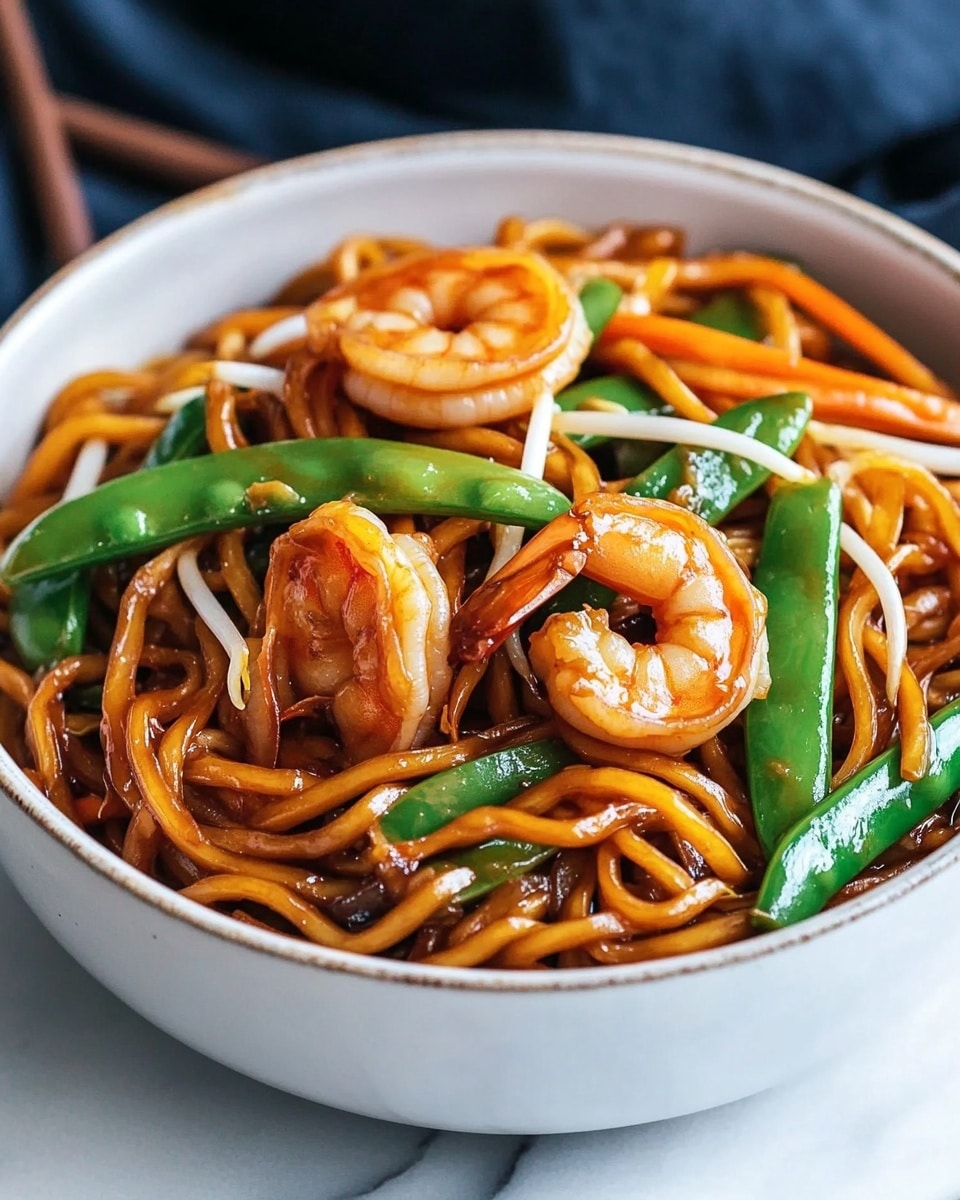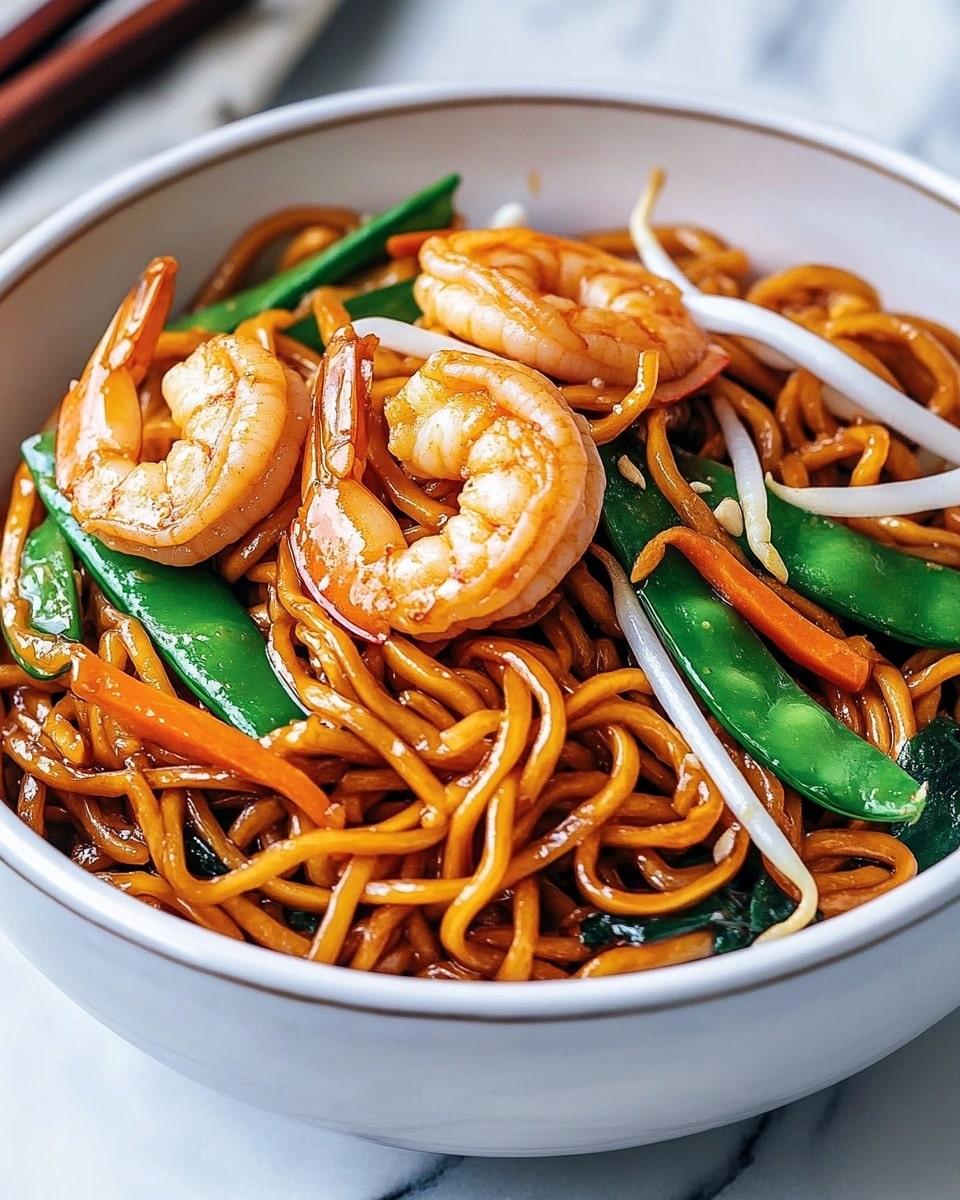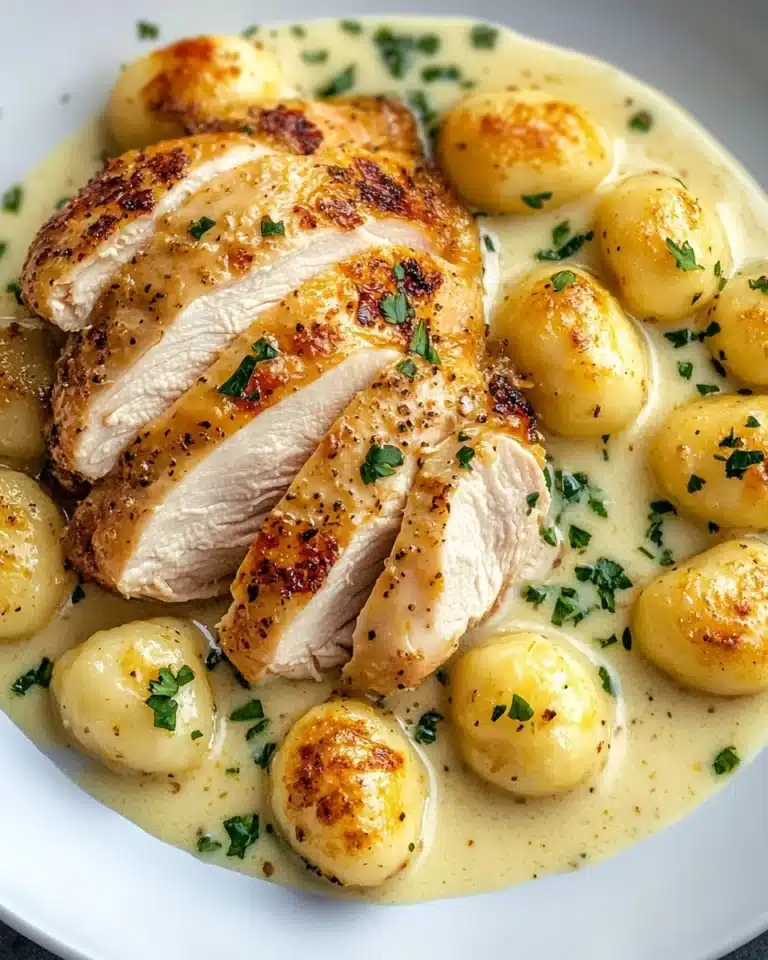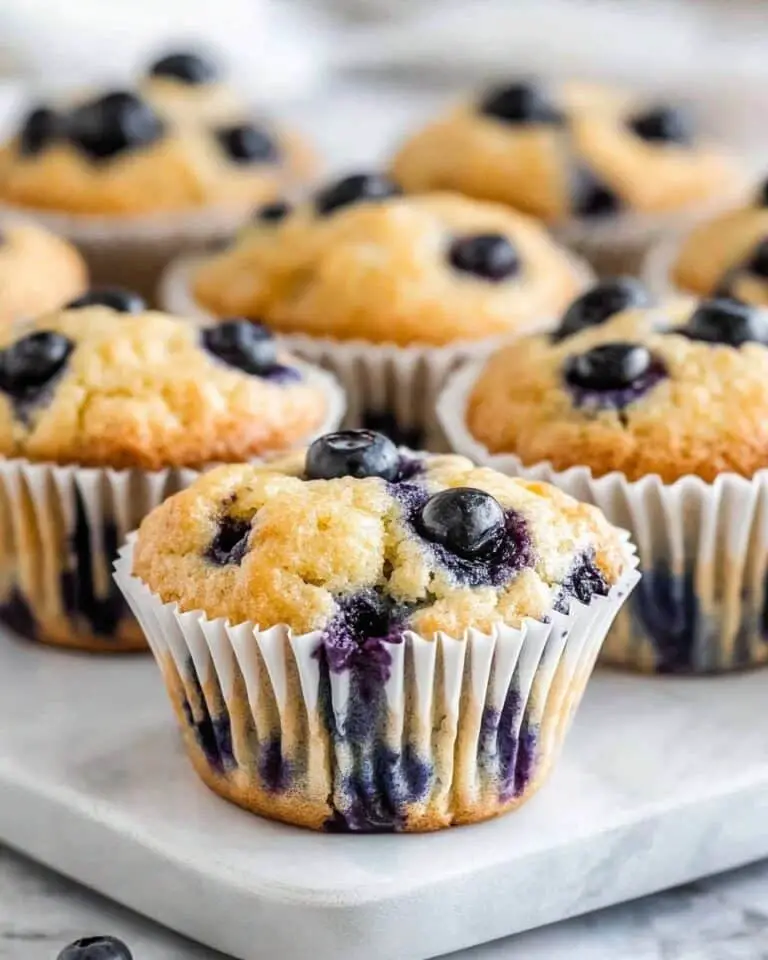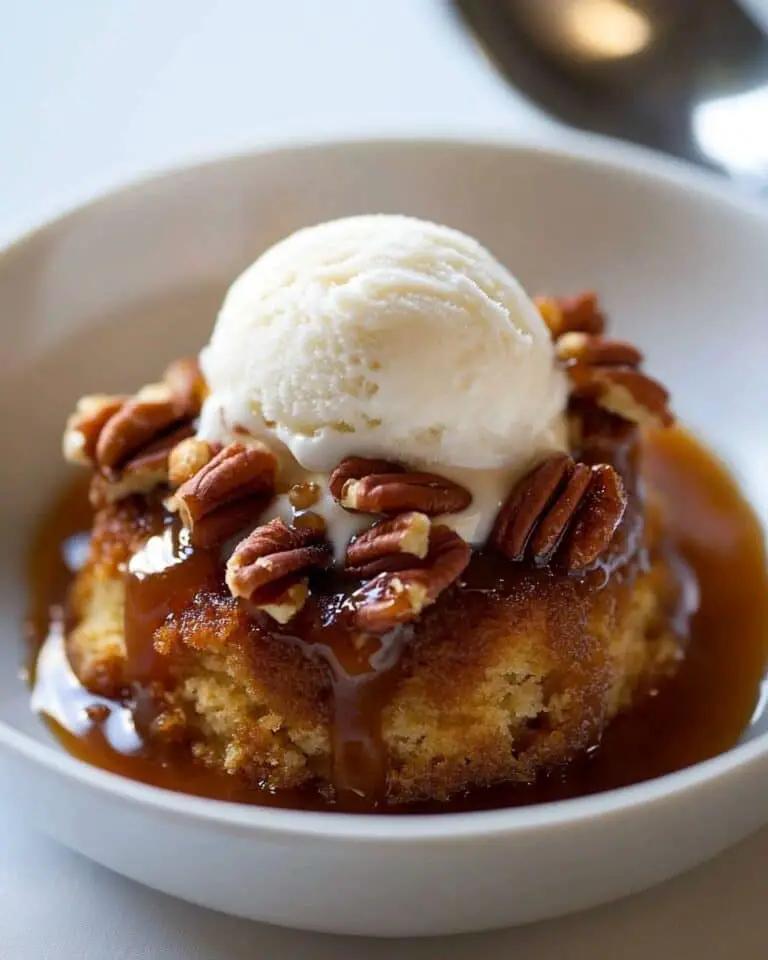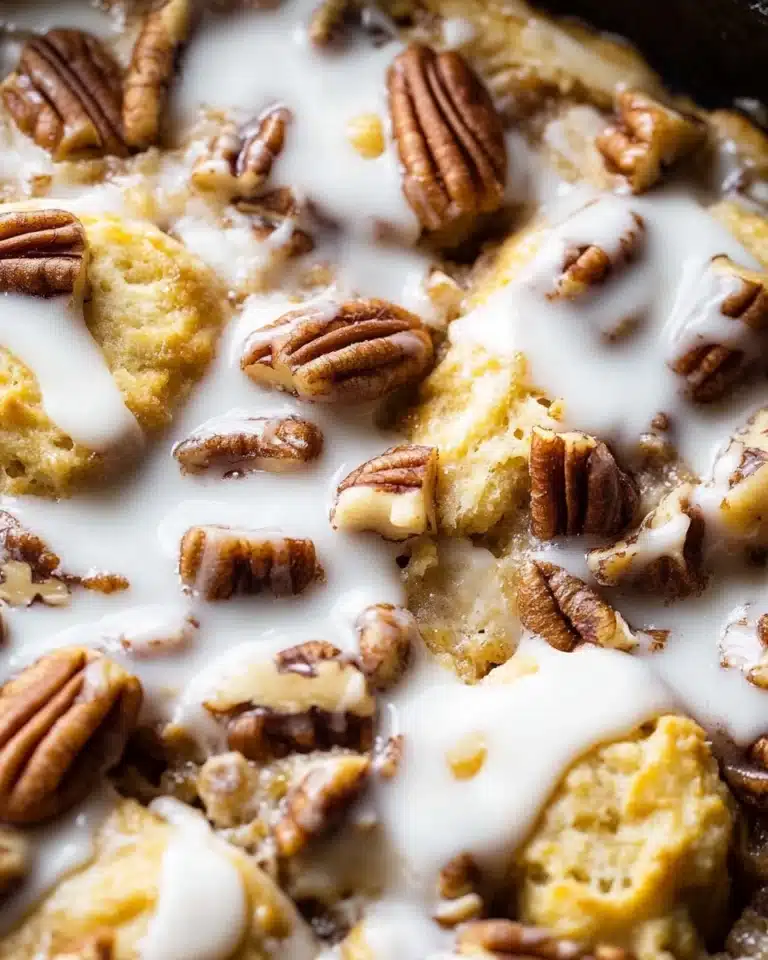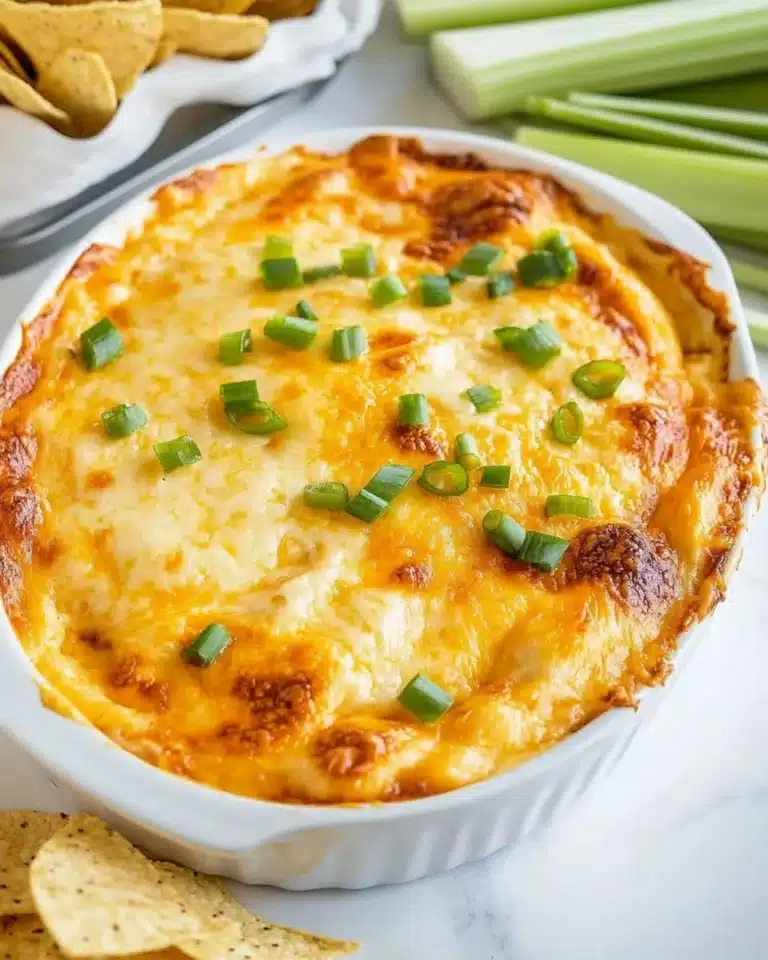If you’re craving a quick, flavorful meal that feels a little fancy but is surprisingly easy to pull off, this Shrimp Lo Mein Recipe is exactly what you need. I absolutely love how this dish comes together with tender shrimp, crisp veggies, and perfectly sauced noodles—comfort food with a fresh, vibrant twist. It’s one of those go-to dinners I make when I want something satisfying but without spending hours in the kitchen.
What makes this Shrimp Lo Mein Recipe special is its balance—the sauce has just the right mix of savory, sweet, and a touch of tanginess, making every bite memorable. Whether you’re cooking for family or impressing friends, you’ll find that it’s wonderfully customizable and always a crowd-pleaser. Plus, it works great for a busy weeknight when you want something homemade and delicious!
Why You’ll Love This Recipe
- Quick & Easy: Prep and cook in about 30 minutes, perfect for weeknights.
- Balanced Flavors: The savory sauce with a hint of sweetness will have everyone asking for seconds.
- Fresh & Crisp Veggies: Adds a great texture contrast that makes each bite exciting.
- Customizable: Easy to swap veggies or protein, so you can make it your own.
Ingredients You’ll Need
The ingredients for this Shrimp Lo Mein Recipe come together to create a harmony of flavors and textures. Using fresh lo mein noodles if you can find them really makes a difference, but dried works well too if you prepare them right. The sauce is a quick blend of pantry staples that elevates the entire dish without any fuss.
- Lo Mein Noodles: Fresh noodles cook quickly and have a great chew, but dried noodles are a convenient backup.
- Light & Dark Soy Sauce: Light soy sauce adds saltiness; dark soy sauce gives depth and color.
- Shaoxing Wine: This authentic cooking wine adds a subtle touch of complexity and aroma.
- Oyster Sauce: Key for that savory, slightly sweet umami punch.
- Granulated Sugar: Balances the salty and savory notes just right.
- Toasted Sesame Oil: Adds a nutty aroma you’ll notice instantly.
- Ground White Pepper: Delivers warmth without overwhelming the other flavors.
- Scallions: Dividing the light and dark parts helps layer flavors and textures.
- Vegetable Oil: Neutral oil works best for high-heat stir-frying.
- Carrots & Snow Peas: These crisp veggies bring freshness and color.
- Water Chestnuts & Bamboo Shoots: For that unique crunch and earthy flavor.
- Raw Shrimp: Peeled and deveined for easy cooking and eating.
- Garlic & Ginger: The foundation of flavor that brightens the dish.
- Mung Bean Sprouts: Adds a light crunch right before serving.
- Extra Soy Sauce, Chili Oil & Rice Vinegar: Optional at the table so everyone can customize their bite.
Variations
I love that this Shrimp Lo Mein Recipe is super flexible—so feel free to tweak it to your liking! Whether you want to make it vegetarian, add more heat, or swap ingredients depending on what’s in your fridge, the sky’s the limit. Here are some ways I’ve played around with it that you might enjoy too.
- Protein Swaps: I sometimes switch shrimp with chicken or tofu—just adjust cooking time accordingly, and it’s just as delicious.
- Veggie Boost: Throw in mushrooms, bell peppers, or broccoli for extra color and nutrition.
- Heat Lovers: Adding chili garlic sauce or fresh sliced chilies amps up the spice level perfectly.
- Gluten-Free Version: Use rice noodles and tamari instead of soy sauce to keep things allergy-friendly.
How to Make Shrimp Lo Mein Recipe
Step 1: Cook the Noodles Just Right
Start by boiling your lo mein noodles in lightly salted water for about 3-5 minutes until they’re just al dente—meaning they’re tender but still have a little bite. Quick rinse under cold water stops the cooking process and prevents sticking. Set them aside—you’ll toss these in the stir-fry last to soak up all that beautiful sauce without getting mushy.
Step 2: Whisk Together the Sauce
While the noodles are cooking, combine your light and dark soy sauces, Shaoxing wine, oyster sauce, granulated sugar, toasted sesame oil, and a pinch of white pepper in a bowl. Give it a good whisk until the sugar dissolves and the mixture looks glossy. This sauce is where all the magic happens—it’s savory, slightly sweet, and super fragrant.
Step 3: Prep Veggies and Scallions
Cut the scallions by splitting the white and light green parts (thinly sliced) from the dark green segments, which you’ll add at the end for a fresh, crisp bite. This layering of scallions adds fun texture and bursts of flavor throughout. Also, prep your other veggies, like shredding carrots and trimming snow peas, so everything is ready to go for a fast stir-fry.
Step 4: Stir-Fry the Veggies and Shrimp
Heat your wok or large skillet over high heat until it’s smoking hot—this is key for that great stir-fry flavor. Add a tablespoon of vegetable oil to sauté carrots, snow peas, water chestnuts, and bamboo shoots for about 2 minutes until crisp-tender. Remove them, then add another tablespoon of oil to the pan for the shrimp. Cook your shrimp just until pink and starting to brown on the edges—about 2-3 minutes—and then set them aside with the veggies.
Step 5: Flavor Boost with Garlic, Ginger, and Scallions
In the last tablespoon of oil, toss in minced garlic, grated ginger, and those white and light green scallions. Stir-fry for just about a minute until fragrant—it smells amazing here! Then, add back your shrimp, veggies, noodles, and mung bean sprouts. Toss everything together gently but thoroughly.
Step 6: Finish with the Sauce and Serve
Pour your sauce mixture around the edges of the pan so it heats through without immediately drowning the noodles. Add in the dark green scallion parts, and toss everything for 1-2 minutes so the sauce coats everything evenly. Give it a quick taste—you might want a little extra soy sauce or white pepper if you like. Serve it hot or warm, and don’t be shy with extra soy sauce, chili oil, or even a splash of rice vinegar at the table to tailor each bite.
Pro Tips for Making Shrimp Lo Mein Recipe
- Don’t Overcook the Shrimp: Cook them just until pink for tender, juicy bites instead of rubbery shrimp.
- High Heat is Your Best Friend: A hot wok or skillet helps you achieve that signature “wok hei” flavor and prevents soggy noodles.
- Rinse Noodles to Stop Cooking: This simple step keeps your noodles from turning mushy or sticking together in the stir-fry.
- Add Vegetables in Batches: Cook the denser vegetables first and more delicate ones later to avoid over or undercooking.
How to Serve Shrimp Lo Mein Recipe
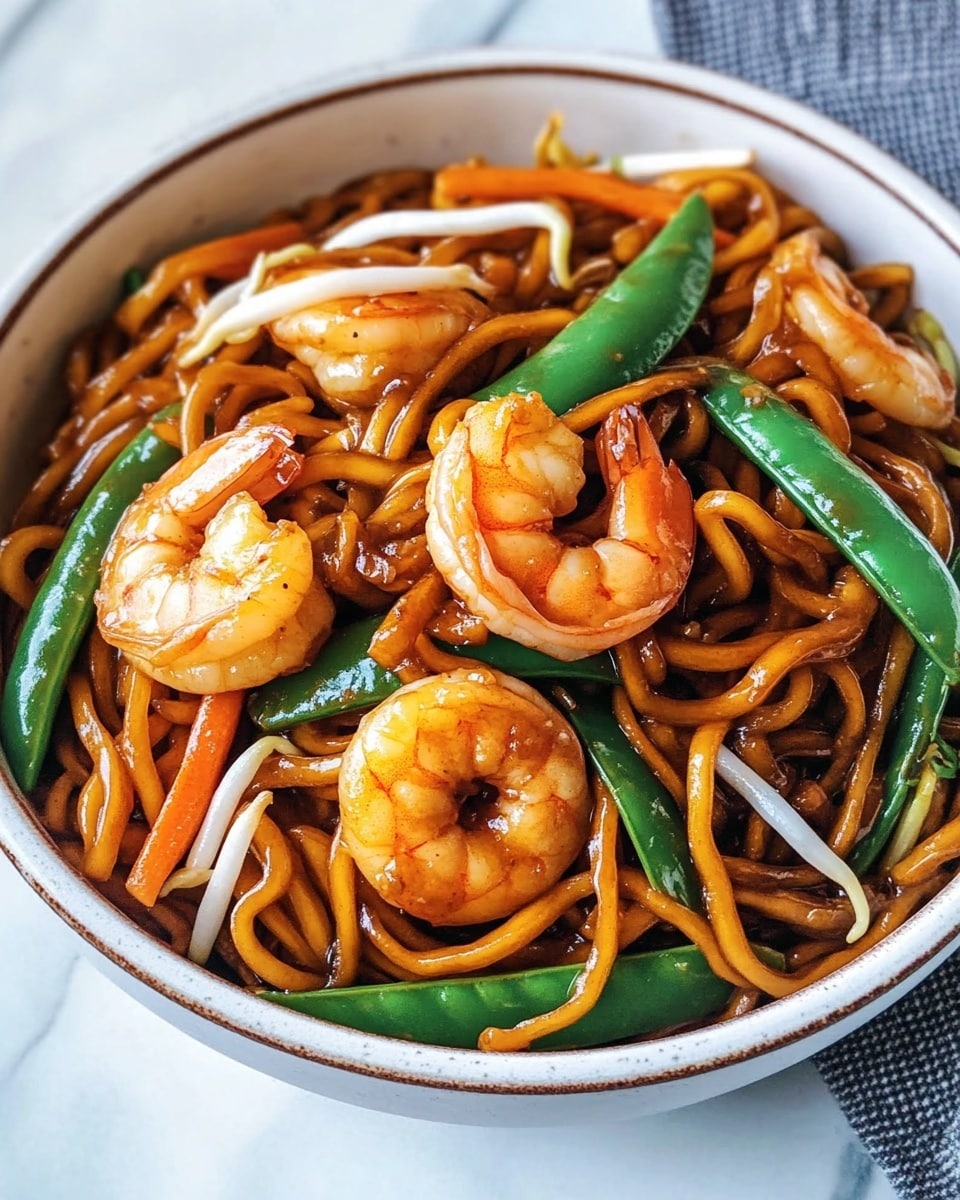
Garnishes
I’m a big fan of fresh garnishes here to brighten things up—sprinkle chopped scallions or fresh cilantro on top. Sometimes I add a few toasted sesame seeds for a bit of crunch and nuttiness. A wedge of lime on the side is also great if you like a little citrus zing to cut through the richness.
Side Dishes
My go-to sides are simple and let the lo mein shine. Steamed dumplings or spring rolls complement the dish perfectly when you want a fuller meal. I also love a crisp Asian cucumber salad or quick pickled veggies alongside to add some refreshing acidity.
Creative Ways to Present
For special occasions, I like to plate this Shrimp Lo Mein Recipe in bowls topped with edible flowers and a drizzle of chili oil for a restaurant-worthy look. Serving it family-style on a large platter with fresh herbs creates a fun, shared meal vibe. Even mini lettuce wraps with the lo mein filling can be a playful, interactive way to enjoy it.
Make Ahead and Storage
Storing Leftovers
I store leftover Shrimp Lo Mein in an airtight container in the refrigerator, and it usually keeps well for up to 3 days. The key is to cool it completely before sealing to keep everything fresh and prevent sogginess. When you open it, you’ll find the flavors have even mellowed and melded nicely.
Freezing
While I don’t freeze lo mein often because noodles can get mushy, if you want to freeze it, I recommend separating the shrimp and veggies from noodles. Freeze them in airtight bags and then reheat and toss together when you’re ready. This method keeps textures better.
Reheating
To reheat, I gently warm the noodles and the stir-fry separately in a hot skillet or wok, then combine them just before serving. This prevents the noodles from overcooking and getting gummy. Adding a splash of soy sauce or a little broth while reheating helps revive the sauce and moisture.
FAQs
-
Can I use dried noodles instead of fresh lo mein noodles?
Absolutely! Dried lo mein or spaghetti noodles work well in a pinch. Just be sure to cook them until al dente and rinse with cold water immediately after draining to prevent sticking and overcooking during the stir-fry.
-
What can I substitute if I don’t have Shaoxing wine?
If you don’t have Shaoxing wine, dry sherry or a splash of mirin or white cooking wine can be good substitutes. Just use a bit less if it’s sweeter so the balance of flavors isn’t affected.
-
How do I keep my shrimp tender in this Shrimp Lo Mein Recipe?
The key is to cook shrimp quickly over high heat just until they turn pink and start to brown slightly at the edges—this usually takes 2-3 minutes depending on size. Overcooking makes shrimp rubbery, so watch closely!
-
Can I make this Lo Mein vegetarian?
Yes, just skip the shrimp and add more firm tofu or mushrooms as your protein source. Be sure to use vegetarian oyster sauce or substitute with hoisin or additional soy sauce to keep the umami flavor.
-
How long does Shrimp Lo Mein last in the fridge?
Stored properly in an airtight container, it lasts about 3 days. After that, the textures and flavors can start to degrade, so it’s best enjoyed fresh or within that timeframe.
Final Thoughts
This Shrimp Lo Mein Recipe has become one of those comfort classics in my kitchen that never gets old. I love how it’s both simple and impressive enough to share with company, but also perfect for a laid-back family dinner. If you give it a try, I’m confident you’ll enjoy the harmony of flavors and textures as much as I do. Plus, once you master the method, you’ll be surprised how often you reach for it when you want something quick, tasty, and satisfying.
Print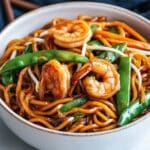
Shrimp Lo Mein Recipe
- Prep Time: 15 minutes
- Cook Time: 15 minutes
- Total Time: 30 minutes
- Yield: 4 to 6 servings
- Category: Main Course
- Method: Stovetop
- Cuisine: Chinese
Description
This Shrimp Lo Mein is a vibrant, delicious stir-fry featuring tender shrimp, crisp vegetables, and perfectly cooked lo mein noodles tossed in a savory, flavorful sauce made with soy sauces, Shaoxing wine, oyster sauce, and sesame oil. Quick to prepare and ideal for a weeknight dinner, it balances protein, fresh veggies, and satisfying noodles for a classic Chinese-inspired meal.
Ingredients
Noodles
- 1 pound lo mein noodles (fresh, if possible)
Sauce
- 2 tablespoons light soy sauce
- 1 tablespoon dark soy sauce
- 2 tablespoons Shaoxing wine
- 2 tablespoons oyster sauce
- 1 teaspoon granulated sugar
- 1 teaspoon toasted sesame oil
- Pinch ground white pepper
Stir-Fry
- 6 scallions
- 3 tablespoons vegetable oil, divided
- 1 cup shredded carrots
- 1 cup snow peas, trimmed
- 8 ounce can water chestnuts, drained
- 8 ounce can bamboo shoots, rinsed and drained
- 1 pound raw shrimp (26/30), peeled, deveined, tail on or off
- 1 tablespoon minced garlic cloves
- 2 teaspoons grated fresh ginger
- 2 cups mung bean sprouts
- Extra soy sauce, chili oil, and/or rice vinegar for serving (optional)
Instructions
- Make the Noodles: Boil lo mein noodles in a pot of lightly salted water for 3-5 minutes until they are al dente. Drain and rinse under cool water to stop the cooking process and prevent sticking. Set aside.
- Make the Sauce: While the noodles are boiling, whisk together light soy sauce, dark soy sauce, Shaoxing wine, oyster sauce, granulated sugar, toasted sesame oil, and a pinch of ground white pepper in a bowl until fully combined. Set aside.
- Prepare Scallions: Cut the scallions in half lengthwise to separate the white/light green parts from the dark green parts. Thinly slice the white and light green parts. Cut the dark green parts into 1 or 2 segments about 2 inches long. Set aside.
- Cook Vegetables: Heat a wok or large skillet over high heat until very hot. Add 1 tablespoon of vegetable oil and sauté the shredded carrots, snow peas, water chestnuts, and bamboo shoots for about 2 minutes, stirring frequently, until they reach a crisp-tender texture. Remove from the pan and set aside.
- Cook Shrimp: Add another tablespoon of vegetable oil to the wok or skillet and sauté the shrimp until they turn pink, translucent, and develop a light brown edge, about 2-3 minutes. Remove from the pan and set aside.
- Sauté Aromatics: Heat the remaining 1 tablespoon of oil in the wok or pan. Add minced garlic, grated ginger, and the sliced white and light green scallions. Sauté for 1 minute until fragrant.
- Combine All Ingredients: Add the cooked vegetables, shrimp, noodles, and mung bean sprouts to the pan with the aromatics. Toss everything together to combine evenly.
- Add Sauce and Finish: Pour the prepared sauce mixture around the sides of the pan to evenly coat all ingredients. Add the dark green scallion parts and cook, tossing frequently, for 1-2 minutes to blend the flavors.
- Adjust Seasoning and Serve: Taste the lo mein and adjust seasoning with extra soy sauce and ground white pepper if needed. Serve hot or warm with optional soy sauce, chili oil for spice, or rice vinegar for a tangy finish at the table.
Notes
- Use fresh lo mein noodles if available for best texture; dried can be substituted but adjust cooking time accordingly.
- Shrimp size 26/30 means 26-30 shrimp per pound; adjust shrimp quantity if using smaller or larger sizes.
- Shaoxing wine can be substituted with dry sherry if unavailable.
- If you prefer, substitute vegetable oil with canola or peanut oil for higher smoke point during stir-frying.
- Adjust vegetables based on availability; bell peppers or broccoli are good alternatives.
- For a spicier dish, add chili oil during cooking or serve on the side.
- Lo mein is best served immediately but can be gently reheated in a wok or skillet to retain texture.
Nutrition
- Serving Size: 1 cup (approximate)
- Calories: 350
- Sugar: 3 g
- Sodium: 700 mg
- Fat: 8 g
- Saturated Fat: 1.2 g
- Unsaturated Fat: 6.5 g
- Trans Fat: 0 g
- Carbohydrates: 45 g
- Fiber: 4 g
- Protein: 25 g
- Cholesterol: 150 mg

